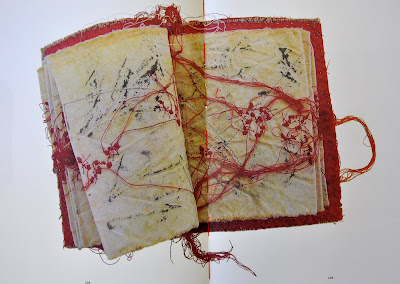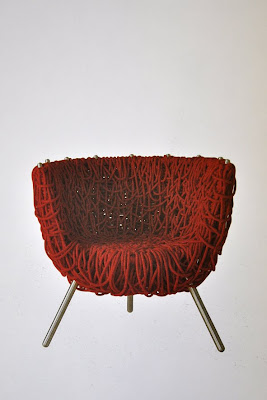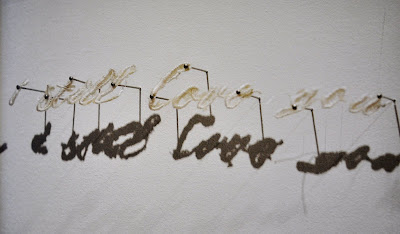
In Sabrina Gschwandtners
KnitKnit-Profiles and Projects from Knitting's New Wave und der Ausstellung
Radical Lace and Subversive Knitting im New Yorker Museum of Arts and Design 2007 werden die Crafters/Artists vorgestellt, die ich nun auch in meine Diplomarbeit miteinbeziehen werde (wenn es auch noch einer genaueren Überprüfung des Reflexionsgrades ihrer Arbeiten bedarf, wie mir im Diplomandenseminar neulich aufgefallen ist...mit Rosemarie Trockel ist die Latte hier sehr hoch gesteckt).
Die Tatsache, dass Stricken, Häkeln, Sticken und Klöppeln gemeinhin einer Sphäre der Häuslichkeit zugeschrieben wird, wird von den in
Radical Lace and Subversive Knitting ausgestellten Arbeiten Lüge gestraft – sei es dass die Arbeiten eine unerwartete Grössendimension annehmen, dass die Komplexität der Fertigung überrascht und ihnen oft ein radikaler und politisch relevanter Inhalt zugrunde liegt.
„First and foremost has been a re-valuation of hand making as a means of recapturing the sensuality and tactility of sculpture. In a world where the clinical and impersonal nature of digital technologies may perplex and discourage us (...), what can restore our connection to community, to our history, and to our shared aspirations is the sense hand – i.e., of making something from start to finish by manual labor.“ so McFadden in the introduction to Radical Lace and Subversive Knitting.
Die Wiederentdeckung von Stricken und anderen Handarbeits-Techniken (so-called „domestic“ handcrafts) kann in Amerika vielleicht auch auf die Folgen der Ereignisse vom 11. September 2001 zurückzuführen sein...
McFadden believes knitting has prospered since 9/11 “because it is such a communication based tradition. Knitting is generally done by someone for somebody; there are a lot of gifts involved with it. Knitters tend to hang together and become little communities, which is a spirit that is reflected in many of the works in this show.”
Weil es im letzten Blogeintrag um Lisa Anne Auerbach ging, und sie unter die Kategorie "politische Strickerin" fällt, möchte ich diese Kategorie noch um
Cat Mazza ergänzen.
http://www.microrevolt.org/
Den gemeinschaftlichen partizipatorischen Aspekt des Strickens betonen
Sabrina Gschwandtner und
Shane Waltener, der mit seinen Knitting Pieces Strickzirkel in Gallerien weltweit einführt und so zum verweilen, reflektieren und austauschen einlädt.
http://www.knitknit.net/
http://www.shanewaltener.com/
Strick als Cosies im öffentlichen Raum, als Space-Gendering, ist die Strategie des Strick-Grafitti-Kollektivs
Knitta, oder auch von
Robyn Love.
http://www.knittaplease.com/
http://www.robynlove.com/
Freddie Robins "Craft Kills" gehört zu meinen absoluten Lieblingsarbeiten. Ihr Werk ist fast ausschließlich der Technik des Strickens gewidmet, besonders auch der kritischen Erforschung des industriellen computergesteuerten Strickautomaten.
http://www.freddierobins.com/


























